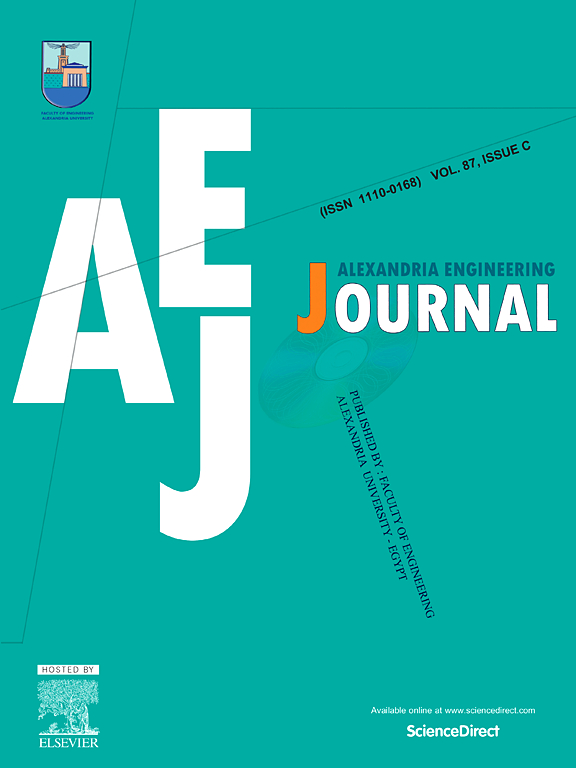MGScoliosis:利用自然图像的联合序数回归进行多粒度脊柱侧弯检测
IF 6.2
2区 工程技术
Q1 ENGINEERING, MULTIDISCIPLINARY
引用次数: 0
摘要
脊柱侧弯是影响青少年的最常见疾病之一。然而,传统的脊柱侧弯筛查方法通常采用体格检查或放射成像。这两种方法都依赖专家,成本高昂,不适合大范围筛查。此外,仅使用自然图像估计 Cobb 角水平也具有挑战性。为了解决这些问题,我们提出了一个多粒度脊柱侧弯检测框架,通过自然图像而不是放射图像来联合估计脊柱侧弯的严重程度和 Cobb 角度水平。具体来说,我们将脊柱侧弯估计视为一个顺序回归问题,并将其转化为一系列二元分类子问题。此外,我们还采用了具有大核注意力的视觉注意力网络作为特征学习的骨干,它能以高效的计算方式建立局部和全局相关模型。特征学习和顺序回归被放入一个端到端的框架中,其中脊柱侧弯严重程度估计和脊柱侧弯角度估计这两个任务是共同学习的,并且可以相互促进。广泛的实验证明,我们的方法优于最先进的方法,也优于人类的表现,这为大范围脊柱侧弯筛查提供了一个有前景且经济的解决方案。特别是,我们的方法在估计脊柱侧弯严重程度和 Cobb 角度水平方面的准确率分别达到 94.90% 和 79.62%,比现有的基于自然图像的脊柱侧弯检测性能分别提高了 4.90% 和 12.15%。代码见 https://github.com/RuiChen-stack/MGScoliosis。本文章由计算机程序翻译,如有差异,请以英文原文为准。
MGScoliosis: Multi-grained scoliosis detection with joint ordinal regression from natural image
Scoliosis is among the most prevalent diseases affecting teenagers. However, traditional scoliosis screening methods often resort to physical examination or radiographic imaging. The two ways both rely on experts with high costs, which are not suitable for wide-range screening. Besides, estimating Cobb angle level only using natural images are challenging. To tackle these issues, we propose a multi-grained scoliosis detection framework by jointly estimating severity level and Cobb angle level of scoliosis from a natural image instead of a radiographic image, which has not been explored before. Specifically, we regard scoliosis estimation as an ordinal regression problem, and transform it into a series of binary classification sub-problems. Besides, we adopt the visual attention network with large kernel attention as the backbone for feature learning, which can model local and global correlations with efficient computations. The feature learning and the ordinal regression is put into an end-to-end framework, in which the two tasks of scoliosis severity level estimation and scoliosis angle level estimation are jointly learned and can contribute to each other. Extensive experiments demonstrate that our approach outperforms state-of-the-art methods as well as human performance, which provides a promising and economical solution to wide-range scoliosis screening. Particularly, our approach achieves accuracies of 94.90% and 79.62% in estimating severity level and Cobb angle level, improving large margins of 4.90% and 12.15% over existing natural image based scoliosis detection performance, respectively. The code is available at https://github.com/RuiChen-stack/MGScoliosis.
求助全文
通过发布文献求助,成功后即可免费获取论文全文。
去求助
来源期刊

alexandria engineering journal
Engineering-General Engineering
CiteScore
11.20
自引率
4.40%
发文量
1015
审稿时长
43 days
期刊介绍:
Alexandria Engineering Journal is an international journal devoted to publishing high quality papers in the field of engineering and applied science. Alexandria Engineering Journal is cited in the Engineering Information Services (EIS) and the Chemical Abstracts (CA). The papers published in Alexandria Engineering Journal are grouped into five sections, according to the following classification:
• Mechanical, Production, Marine and Textile Engineering
• Electrical Engineering, Computer Science and Nuclear Engineering
• Civil and Architecture Engineering
• Chemical Engineering and Applied Sciences
• Environmental Engineering
 求助内容:
求助内容: 应助结果提醒方式:
应助结果提醒方式:


